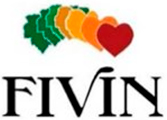
Estudios científicos
Red wine and green tea flavonoids are cis-allosteric activators and competitive inhibitors of glucose transporter 1 (GLUT1)-mediated sugar uptake
Abstract:
The antioxidant- and flavonoid-rich contents of red wine and green tea are reported to offer protection against cancer, cardiovascular disease, and diabetes. Some studies, however, show that flavonoids inhibit GLUT1-mediated, facilitative glucose transport, raising the possibility that their interaction with GLUT1 and subsequent downstream effects on carbohydrate metabolism may also impact health. The present study explores the structure-function relationships of flavonoid-GLUT1 interactions. We find that low concentrations of flavonoids act as cis-allosteric activators of sugar uptake, whereas higher concentrations competitively inhibit sugar uptake and noncompetitively inhibit sugar exit. Studies with heterologously expressed human GLUT1, -3, or -4 reveal that quercetin-GLUT1 and -GLUT4 interactions are stronger than quercetin-GLUT3 interactions, that epicatechin gallate (ECG) is more selective for GLUT1, and that epigallocatechin gallate (EGCG) is less GLUT isoform-selective. Docking studies suggest that only one flavonoid can bind to GLUT1 at any instant, but sugar transport and ligand-binding studies indicate that human erythrocyte GLUT1 can bind at least two flavonoid molecules simultaneously. Quercetin and EGCG are each characterized by positive, cooperative binding, whereas ECG shows negative cooperative binding. These findings support recent studies suggesting that GLUT1 forms an oligomeric complex of interacting, allosteric, alternating access transporters. We discuss how modulation of facilitative glucose transporters could contribute to the protective actions of the flavonoids against diabetes and Alzheimer's disease.
Comentarios divulgativos:
Tanto el vino tinto como el té verde son bebidas ricas en antioxidantes y compuestos flavonoides relacionados con mejoras en diversas enfermedades como el cáncer, las enfermedades cardiovasculares y la diabetes. En este estudio los autores evalúan la interacción entre la estructura/función de los flavonoides y el transportador de glucosa GLUT1, puesto que estudios previos han puesto de manifiesto la inhibición por parte flavonoides de este receptor, lo cual podría tener un efecto sobre el metabolismo de los carbohidratos y por ende sobre la salud.
Los resultados obtenidos mostraron que bajas concentraciones de flavonoides activan la absorción de azúcares, mientras que concentraciones mayores inhiben competitivamente la absorción de azúcares y su liberación de forma no competitiva. Por otro lado, se observó que la afinidad y tipo de unión entre flavonoides y transportadores variaba según compuestos. Y describieron con más detalle la funcionalidad GLUT1. La capacidad para modular este tipo de transportadores a través de flavonoides se plantea como una potencial herramienta en el desarrollo de nuevos abordajes para el tratamiento de enfermedades como la diabetes y la enfermedad de Alzheimer.







